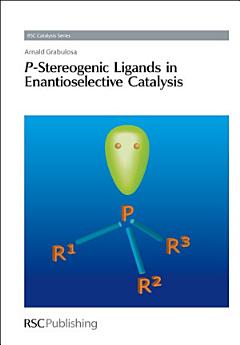P-Stereogenic Ligands in Enantioselective Catalysis
About this ebook
About the author
Arnald Grabulosa was born in Sant Joan de les Abadesses (Catalonia, Spain) in 1978. He studied Chemistry at the University of Barcelona, where he also completed his PhD on P-stereogenic phosphines in 2005, under the supervision of Prof. Guillermo Muller. Afterwards, he spent one year of postdoctoral work in Nancy (France) working with Profs Philippe Gros and Marc Beley in the application of Ru complexes to dye-sensitized solar cells. Still as a postdoctoral researcher, he moved in 2007 to St Andrews (Scotland, UK) to work with Prof. Paul Kamer in the development of DNA-based catalysts and with Dr Mattew Clarke in carbonylation reactions. In 2010, he was appointed as a Lecturer at the Inorganic Chemistry Department of the University of Barcelona.







